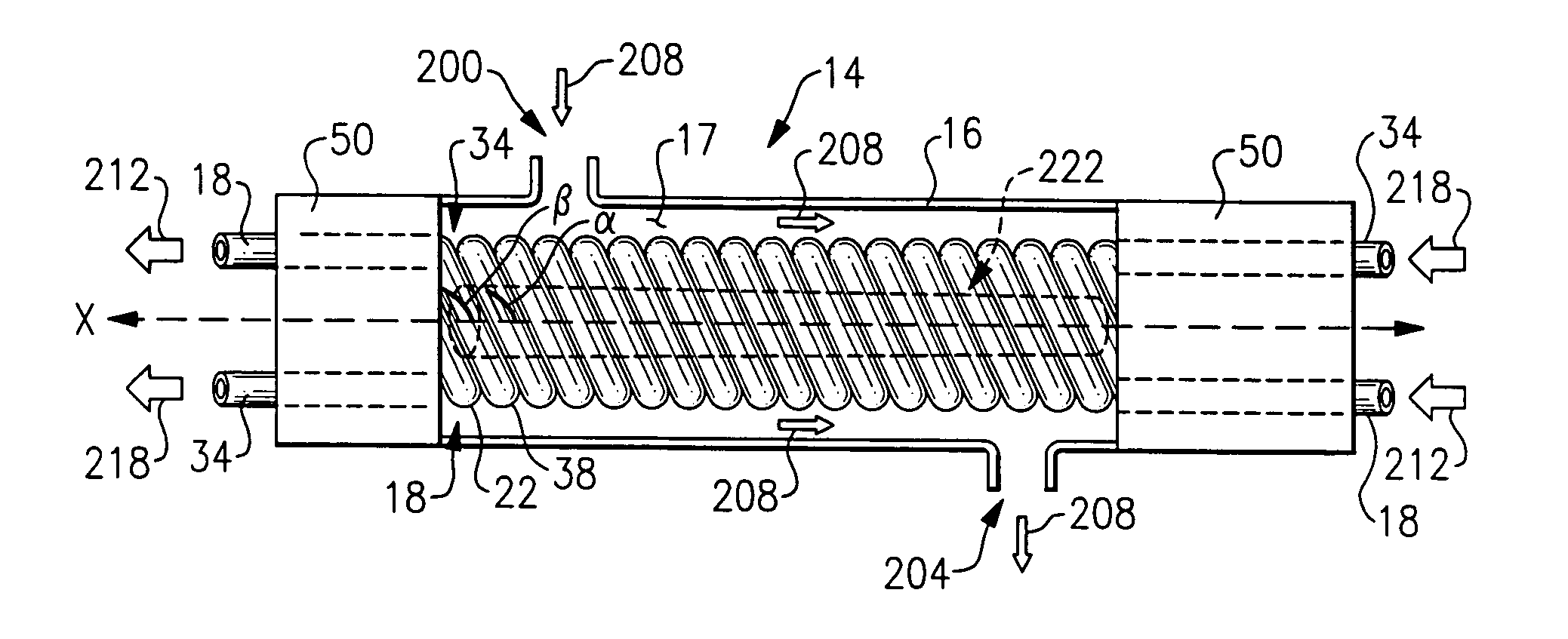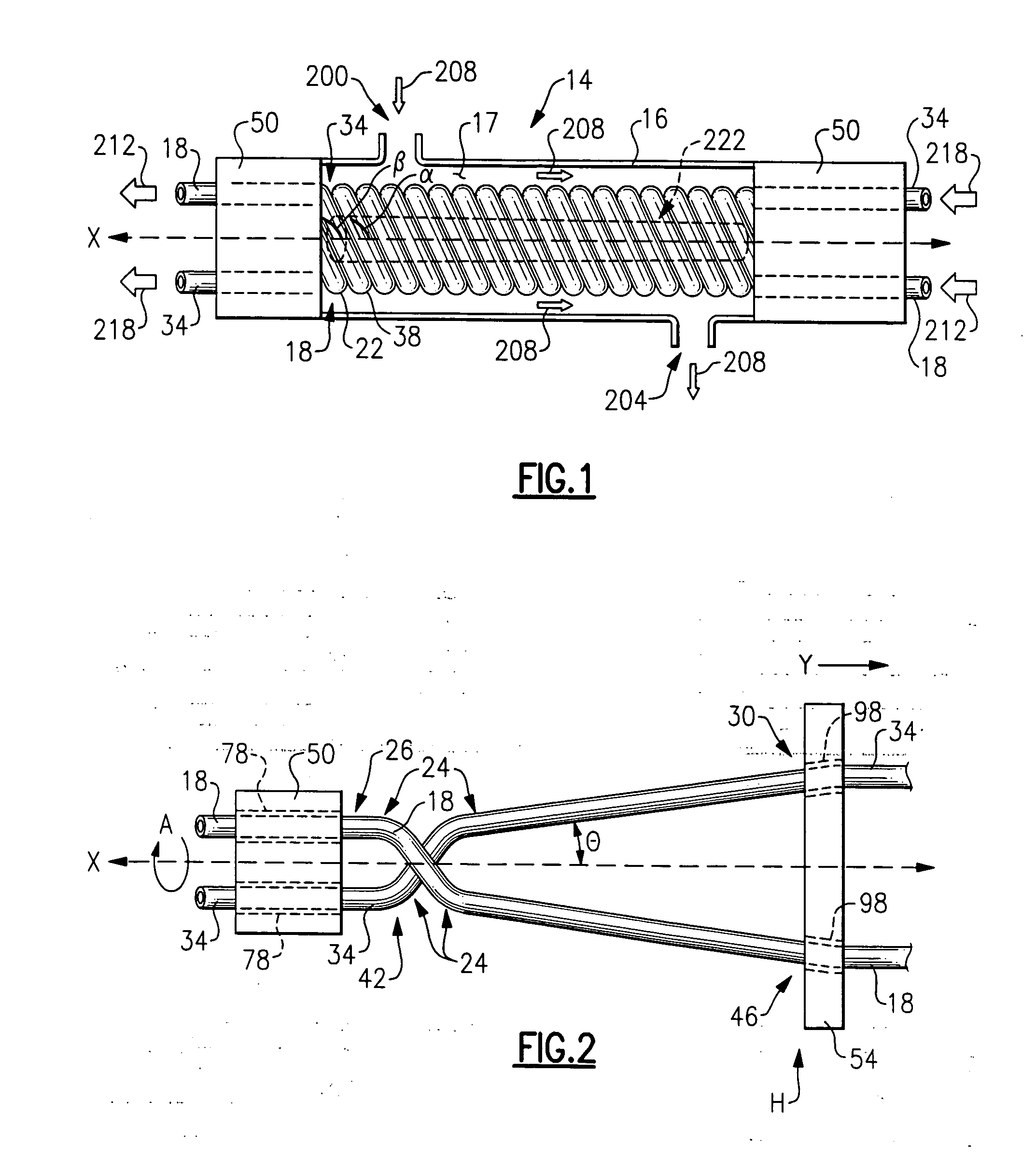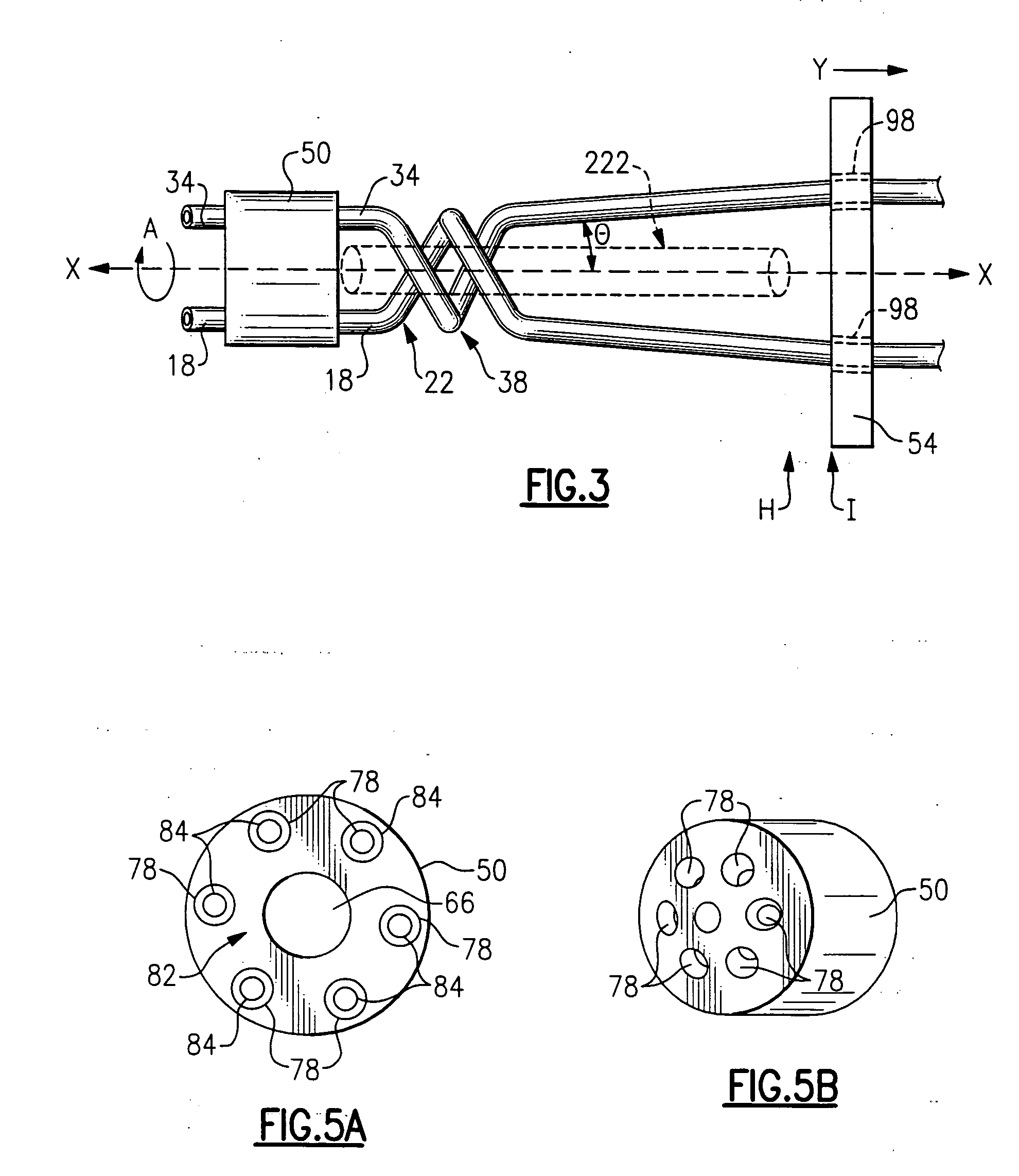Multi-tube in spiral heat exchanger
a heat exchanger and multi-tube technology, applied in the field of heat exchangers, can solve the problems of affecting the efficiency of heat exchangers, so as to improve the efficiency of heat exchange, enhance heat transfer, and reduce the effect of heat loss
- Summary
- Abstract
- Description
- Claims
- Application Information
AI Technical Summary
Benefits of technology
Problems solved by technology
Method used
Image
Examples
Embodiment Construction
[0028]FIG. 1 illustrates a side cross-sectional view of multiple tube heat exchanger 14. Multiple tube heat exchanger 14 has hollow tube cylinder 16 capped by fixtures 50 to create fluid volume 17 within cylinder 16. Cylinder 16 has first fluid inlet 200 and first fluid outlet 204. Disposed within fluid volume 17 is first thermally conductive heat exchanger tube 18 and second heat exchanger tube 34 intertwined along axis X such that first heat exchanger tube 18 forms first loop 22 that neighbors and preferably contacts second loop 38 of second heat exchanger tube 34 along axis X. Heat exchange between fluids in first heat exchanger tube 18 and second heat exchanger tube is not only enhanced by their contact but also improved due to the spiraling of the tubes 18, 34, which enhances fluid turbulence and therefore heat exchange.
[0029] As shown in FIG. 2, to create the helical intertwining shape of first heat exchanger tube 18 and second heat exchanger tube 34, first heat exchanger tub...
PUM
| Property | Measurement | Unit |
|---|---|---|
| thermally conductive | aaaaa | aaaaa |
| angle | aaaaa | aaaaa |
| common angle | aaaaa | aaaaa |
Abstract
Description
Claims
Application Information
 Login to View More
Login to View More - R&D
- Intellectual Property
- Life Sciences
- Materials
- Tech Scout
- Unparalleled Data Quality
- Higher Quality Content
- 60% Fewer Hallucinations
Browse by: Latest US Patents, China's latest patents, Technical Efficacy Thesaurus, Application Domain, Technology Topic, Popular Technical Reports.
© 2025 PatSnap. All rights reserved.Legal|Privacy policy|Modern Slavery Act Transparency Statement|Sitemap|About US| Contact US: help@patsnap.com



